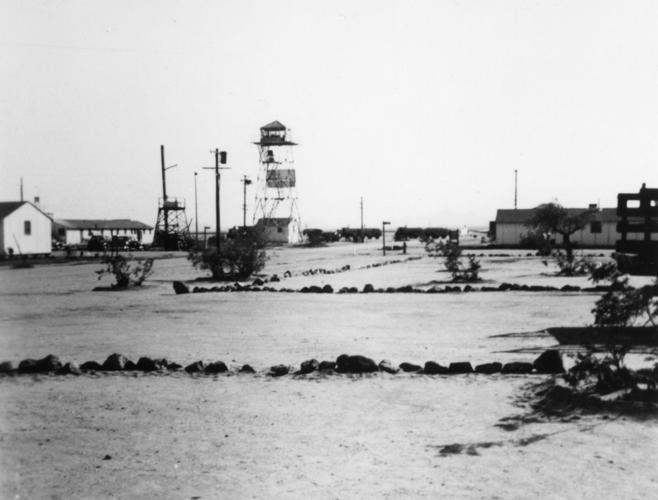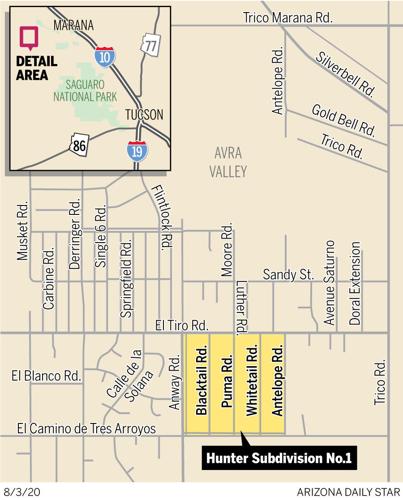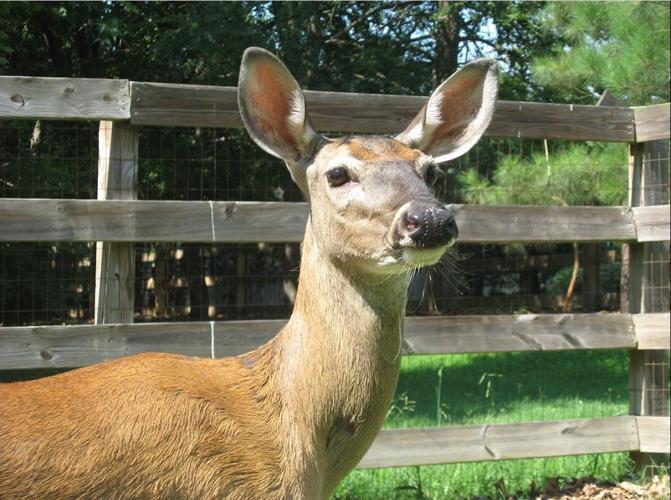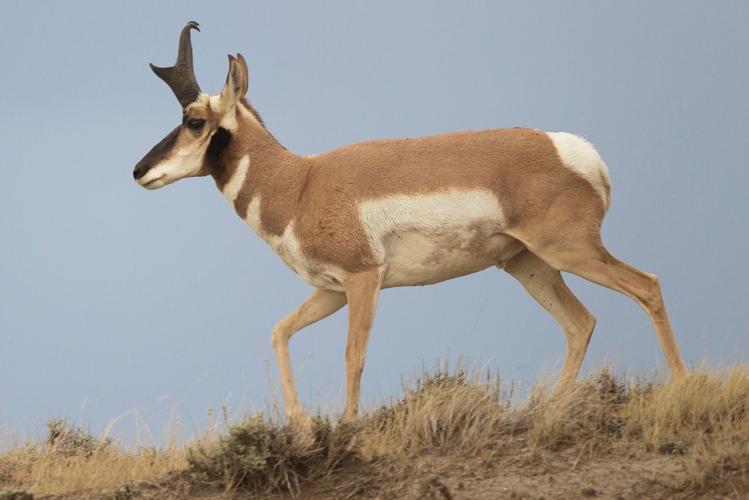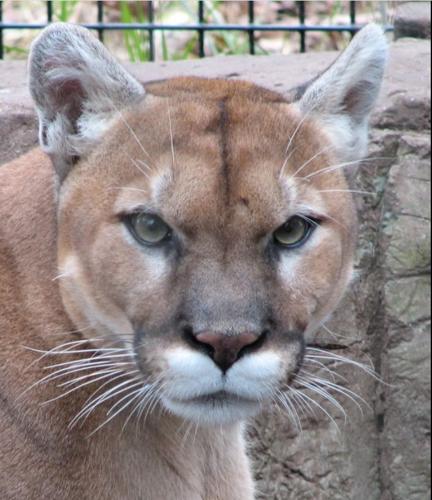In 1951, Pima County named an access road that led to the Marana Auxiliary (Army) Airfield No. 5 — built during World War II and now called El Tiro Gliderport — in present-day Avra Valley.
They called it El Tiro Road, the Shot Road, and as a result, several subdivisions bordering this road, later on, would be named in connection with it, such as El Tiro Estates, El Tirador Estates and Hunter Subdivision.
Around 1970, Gene E. Anderson, a civil engineer and owner of Anderson Engineering and his team had the task of coming up with street names for the new development, Hunter Subdivision, a subdivision name they likely came up with themselves. In addition to this, according to his son Jeff Anderson, his father was an avid hunter, and this very likely contributed to the street names chosen.
Whitetail Road
The whitetail or white-tailed deer is the smallest member of the North American deer family and can be found from lower Canada to South America. Its name is derived from the white underside of the animal’s long broad tail, which it displays when on the alert.
Male deer are called stags or bucks and are easily identifiable in the summer and autumn by their pronounced set of antlers, which grow annually and fall off in the winter. The male of this species are the ones that grow antlers. During the mating season, also called the rut or the rutting period, bucks battle over territory by utilizing their antlers in sparring matches.
Female deer are called does. They bear one to three newborns at a time, normally in May or June, following a seven-month gestation period. Young deer, called fawns, have a reddish-brown coat with white spots which assist them in blending in with the forest.
Adult whitetail, both bucks and does, have reddish-brown coats in the summertime, which dull to a grayish-brown color in the wintertime.
White-tailed deer are herbivores, grazing on most available plant foods.
Predators that hunt white-tail deer in the wild, besides human hunters, are bobcats, mountain lions and coyotes. If being chased by predators, the fleet-footed deer use their speed and agility to outrun them, sprinting up to 30 mph and jumping as high as 10 feet and as far as 30 feet in a single bound.
Arizona’s version of the whitetail is a subspecies called the Coues whitetail. It is found commonly in the state’s southeastern mountains, but range up to the Mogollon Rim and into the White Mountains. They prefer woodlands of pine, oak and chaparral with interspersed clearings.
The Couse white-tail deer is significantly smaller than its eastern cousins. Stags stand a little over 30 inches at the shoulder and scarcely weigh over 100 pounds, with does on average weighing in at 65 pounds.
Antelope Road
The pronghorn or pronghorn antelope while commonly called an antelope isn’t an antelope. It belongs to its own family but resembles the antelope of the Old World. It’s known for its outstanding speed being the second-fastest land mammal in the world, after the cheetah.
The name pronghorn, according to one source, derives “from the pronged or sharply pointed horn of the males.” Another says, “Both sexes sport impressive, backward-curving horns. The horns split to form forward-pointing prongs that give the species its name.”
Pronghorn antelope mate each autumn in the dry, open lands of western North America. Bucks amass harems of does and protect them jealously — at times fighting rival males. Come spring, females give birth to a single or sometimes two offspring. Within just a few days of birth, these fawns can outrun a human.
Pronghorns stand about 3 feet tall at the shoulders, with a small, 3- to 4-inch tail. Their coat is a reddish-brown color but they have white underbellies with wide, white stripes on the throat area.
Pronghorn are also herbivores.
In Arizona, the pronghorn is found mainly in the northern plains. In addition to this, they inhabit high-elevation meadows existing between areas of forest and semi-desert grasslands, and scattered herds are found in the grasslands of southeastern Arizona.
The Sonoran pronghorn, an endangered species, exists in Southern Arizona and Mexico.
Puma Road
Puma, cougar, panther and mountain lion all describe the same animal. In Arizona, the puma is spread out to many parts of the state and are expanding into areas where they once were rare. In general, they can be found where their major prey, deer, is located.
Puma do not have any specific mating times, and they breed at any time of the year with the highest birth rates occurring in the summertime. On average, these female cats give birth to three cubs per litter. The young stay with their mother for about 18 months, learning survival skills necessary to be independent.
Puma require a large amount of space, according to one source, since only a small number of cats can survive in a 30-square-mile range. They tend to be loners except for mothers and cubs and mating pairs.
Puma are carnivores and mainly hunt at night, by following their prey and ambushing them. Preferring to stalk from above, they oftentimes use steep terrain or rock ledges to carry out their hunts. Their main prey in Arizona, is mule deer and whitetail deer although they will also hunt small mammals, livestock and javelina. Puma avoid contact with people when possible.
Although they on occasion will attack humans, according to the National Geographic website, statics bear out that on average, there are only four attacks and one human death a year in the United States and Canada.
Blacktail Road
Blacktail deer are a subspecies of the mule deer, the latter of which is commonly found in Arizona. There are two forms of blacktail, the Columbia black-tailed deer and the Sitka black-tailed deer, both residing in the Pacific Northwest. The mule, Columbia and Sitka are all fairly similar, with a difference in size, and blacktail having a black tail, and the mule having a black-tipped tail.
Taking into account that the other known streets Mr. Anderson named for animals all appear to have an Arizona connection and that he hunted mule deer, it is believed he meant to name it for the mule deer of Arizona, not the blacktail of the Pacific Northwest, so the origin on this street’s name is unsure.
Within a couple of years, Gene E. Anderson surveyed another subdivision called Tucson Avra West several miles south of Hunter Subdivision and the same street names were used with the addition of Doe Road.

